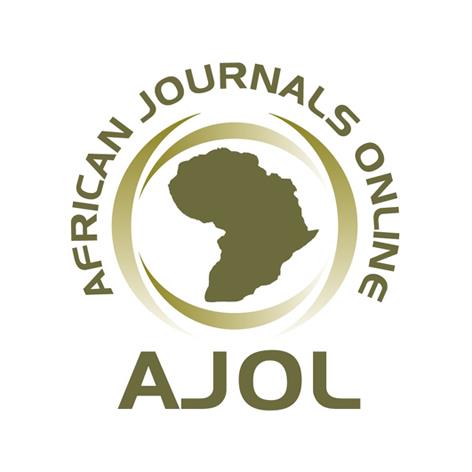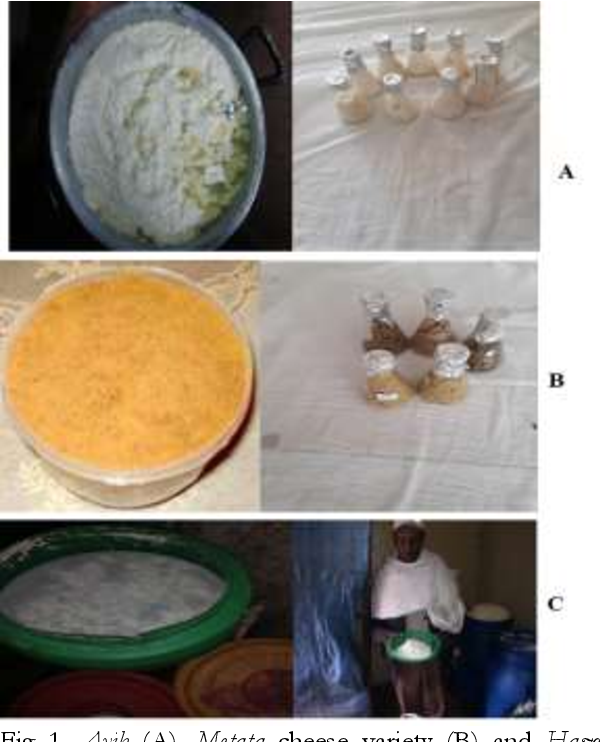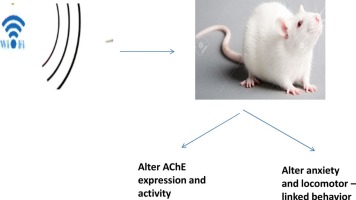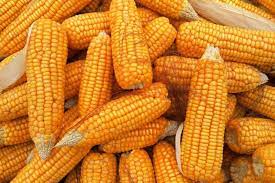Determinants of Commercializing Crop Outputs of Smallholder Farmers in West Gojjam Zone, North-western Ethiopia
Downloads
Background: Commercializing crop production is the pathway for economic development. Previous studies revealed that crop commercialization is affected by resource endowments, and access to institutions and markets. However, the studies have failed to consider landholding size, farmland fragmentation, and crop diversity.
Objective: This study was aimed at investigating factors affecting crop outputs commercialization Method and Materials: the study addresses quantitative and qualitative research questions used to understand the determining factors of crop output commercialization in west Gojjam Zone of the Amhara Regional State of Ethiopia. Multistage random sampling method was used to sample 385 respondents and a structured interview was conducted. The quantitative data was analysed using descriptive statistics and
zero-inflated beta regression. Qualitative data were collected using a focus group discussion and individual interviews, which were then analysed using narration.
Results: The results of the analysis of the data revealed that the average smallholders’ crop output commercialization was estimated at 22.7%. Results from the zero-inflated beta regression model revealed that ownership of cell phones, farmland rental contract, and market orientation increased the probability of output commercialization. However, distance of all-weather roads from residence limited the probability of output commercialization. Household head age, household head educational status, farmland
fragmentation, crop diversification and market orientation increased the proportion of output commercialization whereas landholding size reduced the extent of output commercialization.
Conclusion: Land holding size reduces proportion of output commercialization; farmland fragmentation and crop diversification increases proportion of output commercialization. The results imply that increasing the size of landholding reduces intensified crop production. Farmland fragmentation allows farmers to access favourable agro-ecological functions for growing marketable crops. The results also imply that crop diversification is a strategy to reduce market risks and promotes output commercialization, thereby
improving access to technologies, lowering input purchase costs, reducing output market price seasonal volatility, and enhancing crop output commercialization.
Adam Bekele and Dawit Alemu. 2015. Farm-level
determinants of output commercialization: In
haricot bean based farming systems. Ethiopian
Journal of Agricultural Sciences: 61–69.
Abdo Wudad, Sultan Naser and Latamo Lameso. 2021.
The impact of improved road networks on
marketing of vegetables and households’ income
in Dedo district, Oromia regional state, Ethiopia.
Heliyon, https:// DOI:
1016/j.heliyon.2021.e08173.
Adem Kelifa, Amsalu Mitiku and Osman Rahmeta.
Commercialization of smallholder farmer’s
maize producer in Bilo Nopa district of Ilu Aba
Bor zone, Oromia region, Ethiopia: market
orientation and market participation. Ethiopian
Journal of Applied Sciences and Technology, 12(1): 18-
Aleleign Ademe, Belaineh Legesse, Jemma Haji and
Degeye Goshu. 2017. Smallholder Farmers’ crop
commercilization in the highlands of eastern
Ethiopia. Review of Agricultural and Applied
Economics, 20(2): 30–37.
Arega Alene, Manyong, V.M., Omanya, G., Mignouna,
H.D., Bokanga, M., et al. 2008. Smallholder
market participation under transactions costs:
Maize supply and fertilizer demand in Kenya. Food
Policy, 33: 318–328.
Barrett, C.B., Bellemare, M.F. and Hou, J.Y. 2010.
Reconsidering conventional explanations of the
inverse productivity-size relationship. World
Development, 38(1): 88–97.
Barrett, C.B., Mesfin Bezuneh and Aboud, A. 2001.
Income diversification, poverty traps and policy
shocks in Côte d’Ivoire and Kenya. Food Policy, 26:
–384.
Barrett, C.B., Christian, P. and Bekele Shiferaw. 2017.
The structural transformation of African
agriculture and rural spaces: Introduction to a
special section. Agricultural Economics, 48: 5–10.
Bellemare, F.M. and Barrett, B.C. 2006. An ordered tobit
model of market participation: Evidence from
Keneya and Ethiopia. American Journal of
Agricultural Economics, 88(2): 324–337.
Berhanu Gebremedhin and Moti Jaleta. 2010.
Commercialization of smallholders: Is market
participation enough? Paper presented at the Joint 3rd
African Association of Agricultural Economists
(AAAE) and 48th agricultural economists association of
South Africa (AEASA) Conference, 19-23 September
, Cape Town, South Africa.
Boughton, D., Mather, D., Barret, C., Benfica, R.,
Abdula, D., et al. 2007. Market participation by
rural households in a low-income country: An
asset based approach applied to Mozambique.
Faith and Economics, 50: 64–101.
Carletto, C., Corral, P. and Guelfi, A. 2017. Agricultural
commercialization and nutrition revisited:
Empirical evidence from three African countries.
Food Policy, 67: 106–118.
Ciaian, P., Guri, F., Rajcaniova, M., Drabik, D. and
Paloma, S.G. 2018. Land fragmentation and
production diversification: A case study from rural
Albania. Land Use Policy, 76: 589–599.
CSA (Centrl Statistics Agenency). 2014. The Federal
Democratic Republic of Ethiopia central
statistical agency agricultural sample survey 2013/14. Report on area and production of major
crops. Statistical Bulletin 532, Addis Ababa, Ethiopia.
CSA (Centrl Statistics Agenency). 2021. The Federal
Democratic Republic of Ethiopia central
statistical agency agricultural sample survey
/21. Report on area and production of major
crops. Statistical Bulletin 590, Addis Ababa,
Ethiopia.
Dawit Alemu, Eleni Gebre-Medhin and Samson
Dejene. 2006. From farmer to market and market
to farmer: Characterizing smallholder
commercialization in Ethiopia. Paper submitted to
ESSP policy conference on "Bridging, balancing, and
scaling up: Advancing the rural growth agenda in
Ethiopia” 6-8 June 2006, Addis Ababa, Ethiopia.
de Janvry, A., Fafchamps, M. and Sadoulet, E. 1991.
Peasant household behaviour with missing
markets: Some paradoxes explained. The Economic
Journal, 101(409): 1400–1417.
Di Falco, S., Penov, I., Aleksiev, A. and van Rensburg,
T.M. 2010. Agrobiodiversity, farm profits and
land fragmentation: Evidence from Bulgaria. Land
Use Policy, 27(3): 763–771.
Dillon, B. and Barrett, C.B. 2017. Agricultural factor
markets in sub-Saharan Africa : An updated view
with formal tests for market failure. Food Policy, 67:
–77.
Govereh, J. and Jayne, T.S. 1999. Effects of cash crop
production on food crop productivity in
Zimbabwe: Synergies or Trade-offs? MSU
international development working paper No. 74,
Department of Agricultural economics and Economics,
Michigan State University, Michigan.
Gyau, A., Franzel, S., Chiatoh, M., Nimino, G. and
Owusu, K. 2014. Collective action to improve
market access for smallholder producers of
agroforestry products: Key lessons learned with
insights from Cameroon’s experience. Current
Opinion in Environmental Sustainability, 6: 68–72.
Mmbando, F.E., Edilegnaw Z. Wale and Baiyegunhi,
L.J.S. 2015. Determinants of smallholder farmers'
participation in maize and pigeonpea markets in
Tanzania. Agrekon, 54(1): 96–119.
Holloway, G., Nicholson, C., Delgado, C., Staal, S. and
Ehui, S. 2000. Agroindustrialization through
institutional innovation transaction costs,
cooperatives and milk-market development in the
east-African highlands. Agricultural Economics, 23:
–288.
Key, N., Sadoulet, E. and de Janvry, A. 2000.
Transactions costs and agricultural household
supply response. American Journal of Agricultural
Economics, 82: 245–259.
Latynskiy, E. and Berger, T. 2016. Networks of rural
producer organizations in Uganda: What can be
done to make them work better? World
Development, 78: 572–586.
Leavy, J. and Poulton, C. 2007. Commercialisation in
agriculture. Ethiopian Journal of Economics, XVI(1):
–41.
Lijalem Abebaw, Worku Tuffa and Dawit Alemu. 2021.
Determinants of smallholder farmers’ market
orientation for small-scale crop commercialization
in west Gojjam zone, Amhara region, Ethiopia.
Ethiopian Journal of Economics, XXX(1): 45–76.
Malik, D.P. and Singh, I.J. 2002. Crop diversification -
an economic analysis. Indian Journal of Agricultural
Research, 36(1):61–64.
Newai Gebre-Ab. 2006. Commercialization of
smallholder agriculture in Ethiopia. EDRI notes
and paper Series No. 1, Ethiopian Development Research
Institute, Addis Ababa, Ethiopia
Ntihinyurwa, P.D., de Vries, W.T., Chigbu, U.E. and
Dukwiyimpuhwe, P.A. 2019. The positive impacts
of farm land fragmaentation in Rwanda. Land Use
Policy, 81: 565–581.
Olwande, J., Smale, M., Mathenge, M. K., Place, F. and
Mithöfer, D. 2015. Agricultural marketing by
smallholders in Kenya: A comparison of maize,
kale and dairy. Food Policy, 52: 22–32.
Ospina, R., and Ferrari, S.L.P. 2012. A general class of
zero-or-one inflated beta regression models.
Computational Statistics and Data Analysis, 56: 1609–
Pender, J. and Dawit Alemu. 2007. Determinants of
smallholder commercialization of food crops:
Theory and evidence from Ethiopia. IFPRI
discussion papers 00745, International Food Policy
Research Institute, Washington, USA.
Pender, J. and Berhanu Gebremedhin. 2008.
Determinants of agricultural and land
management practices and impacts on crop
production and household income in the
highlands of Tigray, Ethiopia. Journal of African
Economies, 17(3): 395–450.
Pereira, T.L. and Cribari-Neto, F. 2010. A test for
correct model specification in inflated
betarRegressions.
http://www.ime.unicamp.br/sinape/sites/defaul
t/files/reset_beoi.pdf accessed on 25 November,
Pingali, P., Khwaja, Y. and Meijer, M. 2005.
Commercializing small farms: Reducing
transaction costs. ESA Working Paper No. 05-08,
Agriculture and Development Economics Division, Food
and Agriculture Organization of the United Nations.
Pingali, P.L. 1997. From subsistence to commercial production systems: The transformation of Asian
agriculture. American Journal of Agricultural Economics, 79: 628–634.
Pingali, P.L. and Rosegrant, M.W. 1995. Agricultural
commercialization and diversification: Processes
and policies. Food Policy, 20(3): 171–185.
Rapoport, H. and Docquier, F. 2005. The Economics of
migrants’ remittance. IZA Discussion Paper Series
No. 1531, Forschungsinstitut zur Zukunft der Arbeit
Institute for the Study of Labor, Germany.
Rehima Mussema, Belay Kassa, Dawit Alemu and
Shahidur, R. 2015. Determinants of crop
diversification in Ethiopia: Evidence from
Oromia region. Ethiopian Journal of Agricultural
Sciences, 25: 65–76.
Samuel Gebreselassie and Laudi, E. 2007. Agricultural
commercialization in coffeee growing areas of
Ethiopia. Ethiopian Journal of Economics, XVI(1):
–118.
Sharp, K. 2005. Squaring the ‘ Q ’ s ? methodological
refelections on a study of destitution in Ethiopia.
Q-squared working paper No. 7, Centre for International
Studies, University of Toronto, Toronto.
Strasberg, P.J., Jayne, T.S., Yamano, T., Nyoro, J.,
Karanja, D., et al. 1999. Effect of agricultural
commercialization on food crop input use and
productivity in Kenya. MSU International
Development Working Papers No. 71, Department of
Agricultural Economics, Michigan State University,
Michigan.
von Braun, J. and Kennedy, E., editors. 1994. Agricultural
commercialization, economic development and nutrition.
The Johns Hopkins University Press, Baltimore
and London.Pp.431
Wezel, A., Bellon, S., Doré, T., Francis, C., Vallod, D.,
et al. 2009. Agroecology as a science, A movement
and a practice: A Review. Agronomy for Sustainable
Development, 29(4): 503–515.
Wiggins, S., Argwings-kodhek, G., Leavy, J. and
Poulton, C. 2011. Small farm commercialisation in
Africa: Reviewing the issues. Future Agriculture,
Research Paper 023.
https://assets.publishing.service.gov.uk/media/5
a08ad1e5274a27b20007b3/Research_Paper23.p
df. Accessed on 25 November 2021.
Wu, Z., Liu, M. and Davis, J. 2005. Land consolidation
and productivity in Chinese household crop
production. China Economic Review, 16(1): 28–49.
Yigezu Atnafe, Mugera, A., El-Shater, T., Aw-Hassan,
A., Piggin, C., et al. 2018. Enhancing adoption of
agricultural technologies requiring high initial
investment among smallholders. Technological
Forecasting and Social Change, 134: 199–206.
Zeng, D., Alwang, J., Norton, G., Moti Jaleta, Bekele
Shiferaw, et al. 2018. Land ownership and
technology adoption revisited: Improved maize
varieties in Ethiopia. Land Use Policy, 72: 270–279.
Copyright (c) 2023 Lijalem Abebaw

This work is licensed under a Creative Commons Attribution-NoDerivatives 4.0 International License.
- I am authorized by my co-authors to enter into these arrangements.
- I warrant, on behalf of myself and my co-authors, that:
- the article is original, has not been formally published in any other peer-reviewed journal, is not under consideration by any other journal and does not infringe any existing copyright or any other third party rights;
- I am/we are the sole author(s) of the article and have full authority to enter into this agreement and in granting rights to Springer are not in breach of any other obligation;
- the article contains nothing that is unlawful, libellous, or which would, if published, constitute a breach of contract or of confidence or of commitment given to secrecy;
- I/we have taken due care to ensure the integrity of the article. To my/our - and currently accepted scientific - knowledge all statements contained in it purporting to be facts are true and any formula or instruction contained in the article will not, if followed accurately, cause any injury, illness or damage to the user.
- I, and all co-authors, agree that the article, if editorially accepted for publication, shall be licensed under the Creative Commons Attribution License 4.0. If the law requires that the article be published in the public domain, I/we will notify Springer at the time of submission, and in such cases the article shall be released under the Creative Commons 1.0 Public Domain Dedication waiver. For the avoidance of doubt it is stated that sections 1 and 2 of this license agreement shall apply and prevail regardless of whether the article is published under Creative Commons Attribution License 4.0 or the Creative Commons 1.0 Public Domain Dedication waiver.
- I, and all co-authors, agree that, if the article is editorially accepted for publication in Haramaya Journals, data included in the article shall be made available under the Creative Commons 1.0 Public Domain Dedication waiver, unless otherwise stated. For the avoidance of doubt it is stated that sections 1, 2, and 3 of this license agreement shall apply and prevail.












